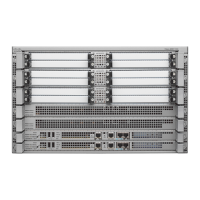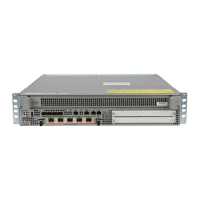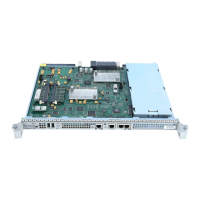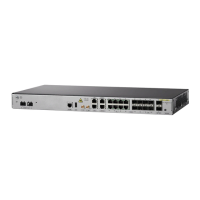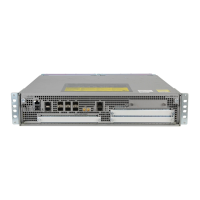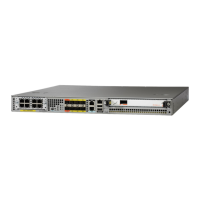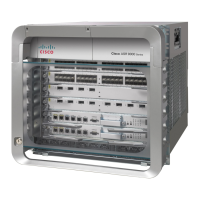Network Synchronization Support
Network Synchronization Overview
3
Cisco ASR 1000 Series Aggregation Services Routers Software Configuration Guide
You can configure network synchronization on the Cisco ASR 1000 Series Routers by using one of the
following features:
• Clock Recovery from SyncE
When the Clock Recovery from SyncE feature is configure
d, the system clock is recovered from the
SyncE clocking source (SyncE-enabled interfaces only). The router uses this clock as the Tx clock
for other supported SPAs.
• Clock Recovery from an External Interface
When the Clock Recovery from an Exte
rnal Interface feature is enabled, the system clock is
recovered from a BITS clock source.
• Clock Recovery from a GPS (10M) Source
Note The Clock Recovery from a GPS (10M) Source feature is supported only on the Cisco ASR
1002-X Router.
When the Clock Recovery from a GPS Source feature is enabled, the system clock is recovered from
a GPS (10M) clock source.
• Line to External
Note The Line to External feature is not supported on the Cisco ASR 1002-X Router.
When the Line to External feature is enabled, the c
lock received from an Ethernet is forwarded to
an external SSU. The SyncE feature provides the clock cleanup functionality. For a router in the
middle of a synchronization chain, the received clock may have unacceptable wander and jitter. The
router recovers the clock from the SyncE interface, converts it to the format required for the BITS
interface, and sends it to an SSU through the BITS port. The SSU performs the cleanup and sends
it back to the BITS interface. The cleaned up clock is received back from the SSU. This clock is used
as the Tx clock for the SyncE ports. For Cisco ASR 1000 Series Routers, the interface from which
the clock is recovered and the BITS port to the SSU must reside on the same card.
A SyncE-enabled Cisco ASR 1000 Series Router provides th
e squelching feature. In this feature, an
alarm indication signal (AIS) is sent to the Tx interfaces if the clock source goes down. When the
Line to External feature is configured, if the line source goes down at any point of time, an AIS is
transmitted through the external interface to the SSU. Squelching is performed only on external
devices, such as SSUs and PRCs.
You can have a maximum of eight clock sources configured on the router. On a router that supports the
N
etwork Synchronization feature, you can configure selection of the clock source on the basis of the
quality of the clock source. With this feature configured, the clock source that offers the best quality is
E1 E1 FAS No No Yes
E1 E1 CAS No No Yes
E1 E1 CAS CRC4 No No Yes
2048 kHz 2048 kHz No No Yes
Table 2 Framing Modes for a BITS Port on the Other Cisco ASR 1000 Series Aggregation
Services Routers
BITS or SSU Port Support
Matrix
Framing Modes
Supported
SSM or QL
Support Tx Port Rx Port

